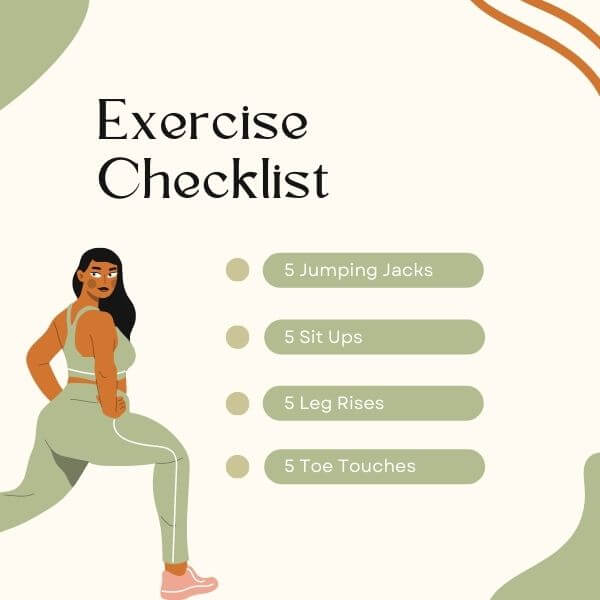Content Summary
Golf training programs aim to improve golfers' skills and fitness levels. They are designed for beginners or pros alike. Here are some key elements of training for golf:
Segmentation: The best program for golfers take a seasonal approach to fitness. Targeting specific goals in-season while allowing ample recovery time to get out on the greens.
Goals: The overall goals of a golf training program should include power development and injury prevention. Negating the repetitive nature of swinging a club.
Areas of focus: A golf training program should cover multiple areas of the golf game. This would Include fitness, distance off the tee, driver accuracy, flexibility, injury prevention, stamina and endurance.
Exercises: Exercises to be included in a golf training program are those that boost core strength, glute strength, arm strength, and overall flexibility.
Individualization: Golf training programs should be tailored to each player's needs and goals. One set of exercises may work for one person and not another.
I started out with a fitness coach to make sure I was targeting the right muscles for me. I now include weight training, stretching, walking and swing training weekly so I can be at my best when I hit the course.

Golf-specific physical qualities: Golf fitness programs aim to help golfers attain golf-specific physical qualities over time. Strength, flexibility, and mobility help you play your best golf.
Training aids: Training aids like specially weighted or jointed clubs, golf bands, alignment sticks, and launch monitors are useful to augment golf instruction and training programs.
Needs analysis: A needs analysis can be conducted to evaluate golfers and design training programs that are tailored to their specific needs and goals.
Overall, golf training programs should aim to improve golfers' skills and fitness levels. This will prevent injury and allow for ample recovery time.
Please be sure to check with your doctor before starting any exercise program.
A Complete Golf Workout Program for Optimal Performance
In this article, we'll review the world of golf-specific workout plans and how they can benefit your game. Since Tiger Woods came on the scene we amateur's have embraced the need for effective exercises.
Whether you're a seasoned golfer looking to improve your swing or a beginner eager to boost your overall fitness, a well-rounded workout routine can notably enhance your performance on the course. Discover the secrets of golf-specific training and take your game to new heights.
Golfers of all levels can benefit from a targeted workout plan designed to improve strength, flexibility, and power. By following a golf-specific training program, you can enhance your swing mechanics, increase shot distance, and prevent injuries.

Golf Weight Training Basics
Golf is a sport that requires a unique blend of strength, flexibility, and precision. A well-rounded golf-specific workout plan can help improve your game.
It will increase shot distance, improve stability, and reduce the risk of injury. A weight lifting program is a crucial part of this plan, as it helps build the necessary strength and power for a powerful golf swing.
Phase 1 – Build a Solid Foundation
The first phase of your golf workout plan should focus on building a solid foundation of strength. This phase is performed during the off-season when you have more time to hit the gym and focus on strength development.
Start with basic exercises like squats, deadlifts, and bench presses. Exercises that target the major muscle groups and provide a solid base for more golf-specific exercises later on. Do 6 to 8 repetitions per exercise, focusing on maintaining a full range of motion and proper form.
Core exercises are crucial in this phase. Planks, Russian twists, and medicine ball throws can help build a strong core, which is essential for a powerful golf swing.
Phase 2 – Develop Golf-Specific Power
Once you've built a solid strength base, it's time to transition into more golf-specific exercises. This phase typically occurs during the late pre-season and focuses on developing power and speed.
Exercises in this phase should mimic the movements and challenges of a golf swing. Cable machine exercises like woodchops and Pallof presses can help develop rotational power. Exercises like dumbbell rows and lat pulldowns can strengthen the upper back and shoulders, key areas for a powerful swing.
In this phase, you should also start including plyometric exercises like box jumps and medicine ball slams to develop explosive power. Do 8 to 10 repetitions per exercise, focusing on performing each movement with speed and power.
Phase 3 – Maintain Your Newfound Strength
Focus on maintaining the strength and power you've developed through your strength training program.
This phase involves lighter weights and higher repetitions to maintain muscle mass without causing excessive fatigue. This can include exercises like cable rotations, dumbbell rows, and core exercises.
How Segmented Programs Work
Segmented programs are designed to maximize performance while minimizing the risk of injury. They do this by breaking the training year into distinct phases, each with a specific focus.
This approach allows you to build strength and power in the off-season and maintain it during the season. This helps you perform at your best when it matters most.

A Detailed Explanation: Unleashing Your Potential
Enhancing Strength and Power
One crucial aspect of a golf-specific workout plan is weight training. Strength training exercises, such as squats, dumbbell repetitions, and core exercises, play a vital role in developing the foundational strength necessary for a powerful golf swing.
Targeting specific muscle groups, like the glutes and the upper body, help you generate more power and maintain stability throughout your swing.
Core Exercises for Stability and Balance
A strong core is essential for maintaining proper posture and stability during the swing. Engaging in exercises that target your abdominal muscles, obliques, and lower back will improve your core strength.
This allows for a more controlled and consistent swing. Planks, Russian twists, and medicine ball exercises are just a few examples of core exercises that can benefit your golf game.
Upper Body Workouts for Swing Efficiency
Your upper body plays a critical role in generating clubhead speed and accuracy. Strengthening your shoulders, upper back, and arms enhances your ability to control the club and execute a smooth swing.
Incorporate exercises like lat pulldowns, cable machine workouts, and dumbbell rows to develop the necessary upper body strength and stability.
Power Training: Unleashing Explosive Strength
Power training focuses on developing explosive strength, crucial for maximizing clubhead speed and hitting the ball farther.
This type of training involves exercises that combine strength and speed, such as medicine ball throws, kettlebell swings, and plyometric movements.
By incorporating power training into your routine, you can improve your swing speed and overall performance on the course.
Lower Body Strength for Stability and Distance
Building leg strength is vital for maintaining stability during your swing and generating power from the ground up. Exercises like squats, lunges, and leg presses target your lower body muscles.
This includes your quadriceps, hamstrings, and glutes. Strengthening these muscle groups enhances your balance, increases shot distance, and contributes to a more controlled swing.
Core Strength: The Foundation of a Strong Swing
Core strength goes beyond mere stability—it contributes to the generation of power and the transfer of energy throughout your body.
By engaging your core muscles during your swing, you can improve your rotation, maintain proper posture, and optimize your swing mechanics. Exercises like rotational medicine ball throws, cable wood chops, and plank variations will help you develop a robust and functional core.
Maximizing Flexibility and Range of Motion
A golf-specific workout plan also emphasizes flexibility exercises to improve your range of motion. Greater flexibility allows for a fuller and more fluid swing, minimizing the risk of injury and optimizing your performance.
Incorporate exercises like dynamic stretches, yoga poses, and foam rolling to enhance your flexibility and maintain optimal swing mechanics.
Developing a Well-Rounded Training Program
Off-Season Training for Long-Term Success: The off-season is an ideal time to focus on building strength, improving flexibility, and refining your golf-specific skills. Design a training program that addresses your weaknesses and emphasizes overall fitness to ensure you're ready to excel when the golf season begins.
Balancing Upper and Lower Body Work: While the upper body is crucial for generating power and control, don't neglect your lower body. A balanced training program that targets both areas will help you maintain stability, transfer energy effectively, and achieve a well-coordinated swing.
Incorporating Power and Speed Exercises: To achieve a powerful swing, incorporate exercises that enhance both power and speed. This includes explosive movements like kettlebell swings, medicine ball slams, and resistance band exercises. These exercises will not only improve your clubhead speed but also increase your ability to generate force through impact.
Progressive Overload for Strength Development: Gradually increase the intensity and resistance of your exercises over time to challenge your muscles and promote strength gains.
Whether it's adding more weight, increasing repetitions, or adjusting the difficulty of your exercises, progressive overload ensures continuous improvement and prevents plateaus.
Fine-Tuning Your Golf-Specific Workout Plan
Core Strength for Optimal Performance: The core is the foundation of your swing, providing stability, power, and transfer of energy. Incorporate exercises such as cable rotations, stability ball exercises, and plank variations to strengthen your core muscles and improve your overall golf performance.
Targeted Training for Specific Swing Phases: Analyze your swing mechanics and identify areas that need improvement. Tailor your workout program to target these specific phases, whether it's the backswing, downswing, or follow-through. This targeted training approach can enhance your technique and address specific swing flaws.
Recovery and Injury Prevention: Proper recovery is crucial for maintaining optimal performance and preventing injuries.
Include rest days, stretching routines, and techniques such as foam rolling and massage to aid in recovery and reduce muscle soreness. Additionally, listen to your body and address any pain or discomfort promptly to avoid potential injuries.
Basic Approach to a Golf Weight Training Program
A golf weight training program should be tailored to your specific needs and goals. However, a basic approach might look like this:
Phase 1: Pre-Season: Focus on building a solid strength base with basic exercises like squats, deadlifts, and bench presses. Incorporate core exercises to build a strong foundation for a powerful swing.
Phase 2: Late Pre-Season to In Season: Transition into more golf-specific exercises to develop power and speed. Incorporate plyometric exercises to develop explosive power.
Phase 3: In Season: Maintain the strength and power you've developed with lighter weights and higher repetitions.
Phase 4: Off Season: Use this time to recover, address any weaknesses or imbalances, and prepare for the next pre-season.
Remember, the goal of a golf weight training program is to improve your golf game, not to become a bodybuilder. Focus on exercises that will benefit your golf game, and always listen to your body. If you feel any pain or discomfort, stop the exercise and adjust as necessary.
Frequently Asked Questions
Can weight training negatively impact my golf swing?
When done correctly and with proper form, weight training can benefit your golf swing by improving strength, stability, and power. However, it's essential to work with a qualified trainer or coach to ensure you're using the right exercises and techniques to avoid any negative impact on your swing mechanics.
How often should I incorporate golf-specific workouts into my training routine?
The frequency of your golf-specific workouts will depend on your fitness level, schedule, and goals. Aim for at least two to three sessions per week, allowing for rest and recovery days in between. Consistency is key, but listen to your body and make adjustments as needed.
Can a golf-specific workout plan benefit beginners as well?
Absolutely! A golf-specific workout plan can benefit golfers of all levels, including beginners. By focusing on building a solid foundation of strength, improving flexibility, and developing proper swing mechanics, beginners can set a strong groundwork for their golf game.
Incorporating exercises that target the core, upper body, lower body, and overall fitness will help beginners develop the necessary physical attributes and skills to improve their swing and performance on the course.
Can a golf-specific workout plan help improve shot accuracy?
Yes, a golf-specific workout plan can contribute to improved shot accuracy. By strengthening the muscles involved in the golf swing, improving stability, and enhancing core strength, you can achieve better control over your shots.
Additionally, increased flexibility and range of motion can help you achieve more consistent and accurate swings.
How long does it take to see results from a golf-specific workout plan?
The time it takes to see results from a golf-specific workout plan can vary depending on various factors, including your starting fitness level, consistency, and effort put into the workouts.
With regular practice and dedication, you can begin to notice improvements in strength, flexibility, and swing mechanics within a few weeks to a few months.
Are there specific exercises for improving golf swing speed?
Yes, there are exercises specifically targeted to improve golf swing speed. These exercises often involve power training, such as medicine ball throws, explosive kettlebell swings, and plyometric exercises.
Additionally, incorporating exercises that focus on strengthening the core, lower body, and upper body can also contribute to increased swing speed.
Can a golf-specific workout plan help prevent golf-related injuries?
Yes, a well-designed golf-specific workout plan can help prevent golf-related injuries. By incorporating exercises that improve strength, flexibility, and stability, you can reduce the risk of common golf injuries, such as back pain, muscle strains, and overuse injuries.
It is important to ensure proper form, listen to your body, and consult with a fitness professional to tailor the workout plan to your specific needs.
Can golf-specific workouts benefit senior golfers?
Absolutely! Golf-specific workouts can be modified to cater to the needs and capabilities of senior golfers.
Focusing on exercises that improve mobility, flexibility, balance, and strength can help senior golfers maintain and even improve their game. It is advisable to consult with a healthcare professional or fitness expert who can provide guidance on appropriate exercises and modifications.
Conclusion
A golf-specific workout plan can help improve your golf game by increasing shot distance, improving stability, and reducing the risk of injury. By breaking your training year into distinct phases, each with a specific focus, you can maximize your performance while minimizing the risk of injury.
A well-designed golf-specific workout plan can significantly improve your golf game by enhancing your strength, power, flexibility, and overall fitness. By incorporating exercises that target specific muscle groups, focusing on power and speed development, and fine-tuning your training program to address specific swing phases, you can unlock your true potential on the golf course.
Remember, consistency and dedication are key. Embrace the challenge of a golf-specific workout plan, and watch as your newfound strength and improved technique translate into a more confident and successful game.
Thank you for visiting, and we hope to see you back soon!








